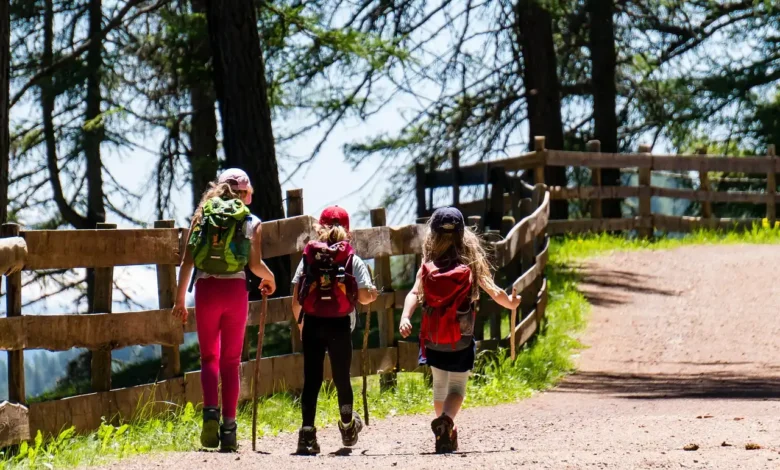
Bluefire Wilderness Therapy is a therapeutic program designed to help adolescents and young adults struggling with various behavioral, emotional, or mental health issues. Located in Idaho, the program uses a combination of wilderness expeditions and therapeutic interventions to foster personal growth and healing. While many families have reported positive outcomes from their experience with Bluefire Wilderness, the program has not been without its share of criticism and controversy. This article aims to provide an in-depth look at the complaints, potential lawsuits, and abuse allegations associated with Bluefire Wilderness Therapy.
- A Quick Overview of Wilderness Therapy
- Bluefire Wilderness Therapy’s Approach
- Common Complaints About Bluefire Wilderness Therapy: Review-Based
- Bluefire Wilderness Lawsuit
- Potential Areas for Legal Action
- Importance of Transparency and Accountability
- Bluefire Wilderness Abuse Allegations
- Importance of Addressing Allegations
A Quick Overview of Wilderness Therapy
Wilderness therapy is a form of treatment that combines traditional therapeutic practices with outdoor and adventure-based activities. The goal is to remove participants from their everyday environments and place them in challenging, natural settings that can promote self-reflection, resilience, and personal growth. Wilderness therapy programs often include activities such as hiking, camping, and survival skills, combined with counseling and behavioral therapies.
Bluefire Wilderness Therapy’s Approach
Bluefire Wilderness Therapy provides a structured and supportive environment where participants can work through their issues with the help of licensed therapists and experienced outdoor guides. The program emphasizes several key components:
- Nature and Outdoor Activities: The wilderness setting creates a sense of challenge and adventure, which can help participants develop confidence, problem-solving skills, and a deeper connection to nature. Activities such as backpacking, rock climbing, and navigation help foster teamwork and leadership skills.
- Individual and Group Therapy: Participants engage in regular therapy sessions, both individually and in groups, to address their specific issues and learn new coping strategies. Group therapy can help participants develop social skills and gain support from peers, while individual therapy provides personalized attention and tailored interventions.
- Family Involvement: Bluefire Wilderness Therapy places a strong emphasis on involving the family in the therapeutic process, recognizing that family dynamics play a crucial role in a participant’s progress. Family therapy sessions, parent workshops, and regular updates help ensure that the entire family is engaged in the healing process.
- Life Skills Development: The program aims to teach practical life skills that participants can carry forward into their everyday lives. This includes emotional regulation, effective communication, conflict resolution, and self-care practices. By equipping participants with these skills, the program aims to promote long-term success and well-being.
Despite the potential benefits of wilderness therapy, programs like Bluefire Wilderness have faced criticism and controversy. Complaints about the program range from concerns about cost and effectiveness to allegations of abuse and neglect.
Common Complaints About Bluefire Wilderness Therapy: Review-Based
1. Cost
One of the most frequently cited complaints about Bluefire Wilderness Therapy is the high cost of participation. Wilderness therapy programs are generally expensive, and Bluefire is no exception. Families often have to pay thousands of dollars for their child to attend the program, which can be a significant financial burden. While some insurance plans may cover part of the cost, many do not, leaving families to bear the full expense. This financial strain can be particularly challenging for families already dealing with the emotional and practical difficulties of supporting a child with behavioral or mental health issues.
The high cost of the program can also lead to concerns about accessibility and equity. Families from lower socioeconomic backgrounds may find it difficult to afford such programs, potentially limiting their access to this form of therapeutic intervention. This raises important questions about the availability of affordable and effective mental health treatment for all individuals, regardless of their financial situation.
2. Effectiveness
Another common concern is the effectiveness of the program. While many families report positive outcomes, others feel that the program did not significantly help their child or that any improvements were temporary. The success of wilderness therapy can vary greatly depending on the individual participant and their specific needs. Some critics argue that the program’s methods are not suitable for all participants and that more tailored approaches may be necessary for certain individuals.
Effectiveness can be influenced by several factors, including the severity of the participant’s issues, their willingness to engage in the process, and the support they receive upon returning home. Some families report that while their child made progress during the program, they struggled to maintain these improvements after transitioning back to their everyday environment. This highlights the importance of aftercare and continued support to help participants sustain the gains made during wilderness therapy.
3. Safety Concerns
Safety is a major concern for any wilderness therapy program, and Bluefire Wilderness Therapy is no different. Some parents and former participants have raised concerns about the physical and emotional safety of the participants. The wilderness environment can be inherently risky, and the activities involved can lead to injuries if not properly supervised. Additionally, the emotional strain of being in a challenging and unfamiliar setting can be significant for participants with severe mental health issues.
Ensuring the safety of participants requires robust safety protocols, thorough staff training, and careful planning. Programs must be prepared to handle emergencies and provide appropriate medical care when needed. Concerns about safety can also extend to the emotional well-being of participants. The intense and immersive nature of wilderness therapy can be overwhelming for some individuals, and it is crucial for programs to provide adequate support and monitor participants closely to prevent emotional distress or harm.
4. Communication
Effective communication between the program and the families of participants is crucial for the success of wilderness therapy. However, some families have complained about the level of communication from Bluefire Wilderness Therapy. They feel that they were not adequately informed about their child’s progress or any issues that arose during the program. This lack of communication can lead to frustration and a feeling of helplessness for parents who are already dealing with the stress of having a child in treatment.
Open and transparent communication helps build trust between the program and the families. Regular updates, detailed progress reports, and opportunities for parents to ask questions and provide feedback are essential components of effective communication. When families feel informed and involved, they are better equipped to support their child’s journey and contribute to their long-term success.
5. Treatment Methods
The treatment methods used in wilderness therapy can be a point of contention. Some individuals have criticized Bluefire Wilderness Therapy’s methods, feeling that they were too harsh or not suitable for their child’s specific needs. Wilderness therapy often involves a degree of physical and emotional challenge that can be difficult for some participants to handle. Critics argue that these methods may not be appropriate for all individuals, particularly those with severe or complex mental health issues.
The balance between challenge and support is a critical aspect of wilderness therapy. While some level of challenge can promote growth and resilience, it is important for programs to ensure that these challenges are manageable and that participants receive adequate support. Tailoring the therapeutic approach to meet the unique needs of each participant is essential for promoting positive outcomes and minimizing the risk of harm.
6. Staff Qualifications
The qualifications and training of the staff members at Bluefire Wilderness Therapy have also been a source of concern for some families. While the program employs licensed therapists and experienced outdoor guides, there have been complaints about staff members not being adequately prepared to handle serious behavioral or mental health issues. Ensuring that staff have the necessary training and experience to provide appropriate care is essential for the safety and well-being of participants.
Qualified staff play a crucial role in the success of wilderness therapy programs. They must be able to manage the complexities of working with participants who have diverse needs and backgrounds. Continuous professional development and regular training updates can help staff stay informed about best practices and new therapeutic techniques. Additionally, staff should be equipped with the skills to handle emergencies and provide effective support in challenging situations.
7. Long-term Impact
One of the key measures of a therapy program’s success is its long-term impact on participants. Some former participants and their families have reported that the positive changes experienced during the program did not last after returning home. This raises questions about the program’s long-term efficacy and the extent to which participants are able to integrate the skills and insights gained during their time in the wilderness into their everyday lives.
Long-term success often depends on the support and resources available to participants after they leave the program. Effective aftercare plans, ongoing therapy, and family involvement are critical components of sustained progress. Programs should provide clear guidance and support for participants and their families to help them navigate the transition back to everyday life and continue building on the progress made during wilderness therapy.
You might also like: A Closer Look at Parents’ Feedback about BlueFire Wilderness Therapy
Bluefire Wilderness Lawsuit
Despite the complaints and criticisms, there is currently no concrete evidence of official lawsuits against Bluefire Wilderness Therapy. While some less reputable websites allude to lawsuits having been filed against the program, there is no verifiable information to support these claims. The absence of publicized lawsuits does not necessarily mean that there are no issues with the program, but it does suggest that any problems have not escalated to the level of legal action or have been resolved through other means.
Potential Areas for Legal Action
Although there are no known official lawsuits, potential areas for legal action against wilderness therapy programs like Bluefire Wilderness Therapy could include:
- Abuse and Neglect: Allegations of physical, emotional, or psychological abuse by staff members or negligence leading to harm can lead to lawsuits. Ensuring the safety and well-being of participants is a fundamental responsibility of any therapeutic program. Legal action in such cases can result from failure to protect participants from harm or inadequate response to allegations of abuse.
- Safety Issues: If a participant is injured or endangered due to inadequate safety measures or lack of proper supervision, this can result in legal action. Wilderness therapy involves inherent risks, and it is crucial for programs to have robust safety protocols in place. Legal claims can arise if families believe that the program failed to provide a safe environment or did not adequately address safety concerns.
- Misrepresentation: Lawsuits may arise if families feel that the program’s benefits and outcomes were misrepresented or oversold. Transparency about the program’s methods, expected outcomes, and potential risks is essential for maintaining trust with families. Misrepresentation claims can involve allegations that the program made false or misleading statements about its effectiveness or the qualifications of its staff.
- Violation of Rights: Participants or their families might sue if they believe that the participant’s rights were violated during the program, such as through improper confinement or denial of basic needs. Respecting the rights and dignity of participants is a core ethical principle for therapeutic programs. Legal action can be taken if families believe that the program infringed on the rights of participants or failed to provide adequate care and support.
- Medical Negligence: If a participant’s medical needs are not adequately addressed or if there is a failure to provide necessary medical care, this can lead to legal claims. Proper medical oversight and care are crucial, particularly for participants with pre-existing health conditions or those who experience medical emergencies during the program. Legal claims in this area can involve allegations of inadequate medical attention or failure to respond to medical emergencies.
Importance of Transparency and Accountability
For any therapeutic program, transparency and accountability are key to building trust and ensuring the well-being of participants. Bluefire Wilderness Therapy, like other wilderness therapy programs, should prioritize clear communication with families, robust safety protocols, and regular evaluation of their methods and outcomes. By addressing concerns proactively and maintaining high standards of care, the program can help mitigate the risk of legal action and foster positive outcomes for participants.
Transparency involves providing clear and accurate information about the program’s methods, expected outcomes, and potential risks. This includes being upfront about the costs, the qualifications of the staff, and the safety measures in place. Accountability involves taking responsibility for any issues that arise, addressing complaints promptly and effectively, and continuously striving to improve the program based on feedback and evaluation.
By fostering a culture of transparency and accountability, wilderness therapy programs can build trust with participants and their families, enhance the quality of care, and ensure the long-term success and well-being of those they serve.
Bluefire Wilderness Abuse Allegations
Abuse allegations are among the most serious complaints that can be made against a therapeutic program. While there is no verifiable evidence of official abuse allegations against Bluefire Wilderness Therapy, it is important to address the potential for such claims and the measures that can be taken to prevent abuse and ensure the safety of participants.
Types of Abuse Allegations
Abuse allegations in therapeutic programs can take several forms, including:
- Physical Abuse: Physical abuse involves the use of force that results in bodily harm or injury. This can include hitting, restraining, or other forms of physical violence. Allegations of physical abuse in therapeutic settings are particularly concerning as they directly undermine the safety and well-being of participants.
- Emotional Abuse: Emotional abuse includes behaviors that harm an individual’s emotional well-being, such as verbal abuse, manipulation, or intimidation. Emotional abuse can have long-lasting effects on a participant’s mental health and self-esteem.
- Psychological Abuse: Psychological abuse involves actions that negatively impact an individual’s mental health, such as coercive control, isolation, or gaslighting. Psychological abuse can be subtle and insidious, making it difficult to detect and address.
- Neglect: Neglect occurs when a participant’s basic needs are not met, such as food, shelter, medical care, or supervision. Neglect can have serious consequences for participants’ physical and emotional well-being.
Preventing Abuse in Wilderness Therapy
To prevent abuse and ensure the safety of participants, wilderness therapy programs like Bluefire Wilderness Therapy should implement comprehensive safeguards and best practices:
- Thorough Screening and Training of Staff: Staff members should undergo thorough background checks and receive extensive training in both therapeutic techniques and safety protocols. This helps ensure that they are qualified and capable of providing appropriate care. Ongoing training and professional development are also important to keep staff updated on best practices and new therapeutic approaches.
- Clear Policies and Procedures: The program should have clear policies and procedures in place for addressing allegations of abuse or neglect. This includes a transparent process for reporting and investigating complaints. Policies should outline the steps to be taken if abuse is suspected, including notifying the appropriate authorities and ensuring the safety of the participant.
- Regular Monitoring and Evaluation: Ongoing monitoring and evaluation of the program’s methods and outcomes can help identify and address any issues that arise. This includes regular feedback from participants and their families. Independent evaluations by external organizations can also provide valuable insights and help ensure that the program meets high standards of care.
- Creating a Safe and Supportive Environment: The program should foster a safe and supportive environment where participants feel comfortable reporting any concerns or issues. This includes promoting open communication and ensuring that participants’ rights are respected. Creating a culture of safety and respect is essential for preventing abuse and supporting participants’ well-being.
- Independent Oversight: External oversight by regulatory agencies or professional organizations can help ensure that the program adheres to high standards of care and accountability. This includes regular inspections and accreditation processes. Independent oversight can provide an additional layer of protection for participants and help build trust with families.
Importance of Addressing Allegations
If allegations of abuse or neglect do arise, it is crucial for the program to address them promptly and transparently. This includes conducting thorough investigations, taking appropriate corrective actions, and communicating with the affected families. By addressing concerns proactively, the program can help rebuild trust and ensure the safety and well-being of all participants.
Addressing allegations involves taking immediate steps to ensure the safety of the participant, conducting a fair and impartial investigation, and implementing any necessary changes to prevent future incidents. Transparency with families and stakeholders is important for maintaining trust and demonstrating a commitment to accountability and continuous improvement.
Conclusion
Bluefire Wilderness Therapy, like many wilderness therapy programs, has received a mix of positive and negative feedback. Common complaints include concerns about cost, effectiveness, safety, communication, treatment methods, staff qualifications, and long-term impact. While there is currently no concrete evidence of official lawsuits or verified abuse allegations against the program, it is important to approach the information with caution and conduct thorough research.
For families considering Bluefire Wilderness Therapy or any similar program, it is essential to seek information from reliable sources, consult with professionals, and ask questions about the program’s methods, safety measures, and staff qualifications. By making informed decisions and advocating for transparency and accountability, families can help ensure that their loved ones receive the best possible care and support.
Did you find this article helpful? If so, check out the rest of our site for more informative content.





